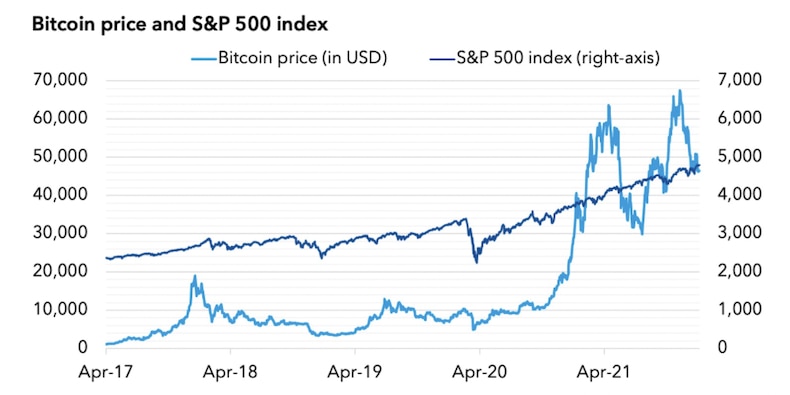An IMF chart shows bitcoin and stocks moved closely together during the pandemic.IMF
Bitcoin and stocks are moving increasingly in lockstep and that poses financial-stability risks, the IMF said Tuesday. Bitcoin volatility explains about one-sixth of S&P 500 volatility during the pandemic. Crypto assets showed little correlation with major stock indexes before the pandemic. Bitcoin and large-cap US stocks have been moving more in tandem with each other since the COVID-19 crisis and that tighter correlation suggests risks to financial stability, the International Monetary Fund said Tuesday.
“Our analysis suggests that crypto assets are no longer on the fringe of the financial system,” the IMF said in a blog post highlighting that bitcoin’s correlation with the S&P 500 index has turned higher than that between stocks and other long-standing asset classes such as gold, major currencies, and investment-grade bonds.
The stronger correlations suggest the world’s most valuable cryptocurrency has been acting as a risky asset, it said.
The correlation coefficient of daily moves was just 0.01 between 2017 and 2019, well before the coronavirus outbreak. However, “that measure jumped to 0.36 for 2020–21 as the assets moved more in lockstep, rising together or falling together,” the institution said.
Volatility in the digital currency, valued at $812 billion as of Tuesday, explains about one-sixth of S&P 500 volatility during the pandemic, and about one-tenth of the variation in S&P 500 returns, it said.
“As such, a sharp decline in Bitcoin prices can increase investor risk aversion and lead to a fall in investment in stock markets. Spillovers in the reverse direction—that is, from the S&P 500 to Bitcoin—are on average of a similar magnitude, suggesting that sentiment in one market is transmitted to the other in a nontrivial way.”
Bitcoin, ether, and other crypto assets showed little correlation with major stock indexes before the pandemic. But crypto prices and US stocks both soared on heightened risk appetite among investors after central banks worldwide unleashed unprecedented levels of financial support to mitigate the impact of the health crisis.
